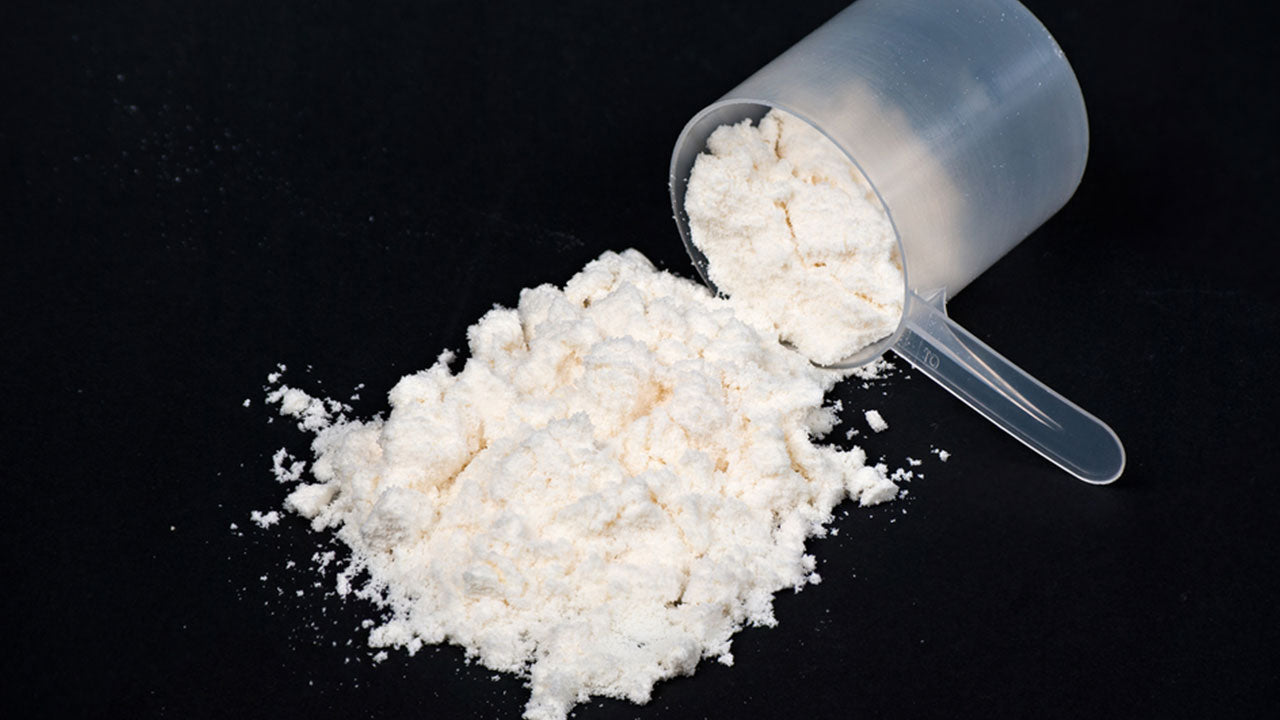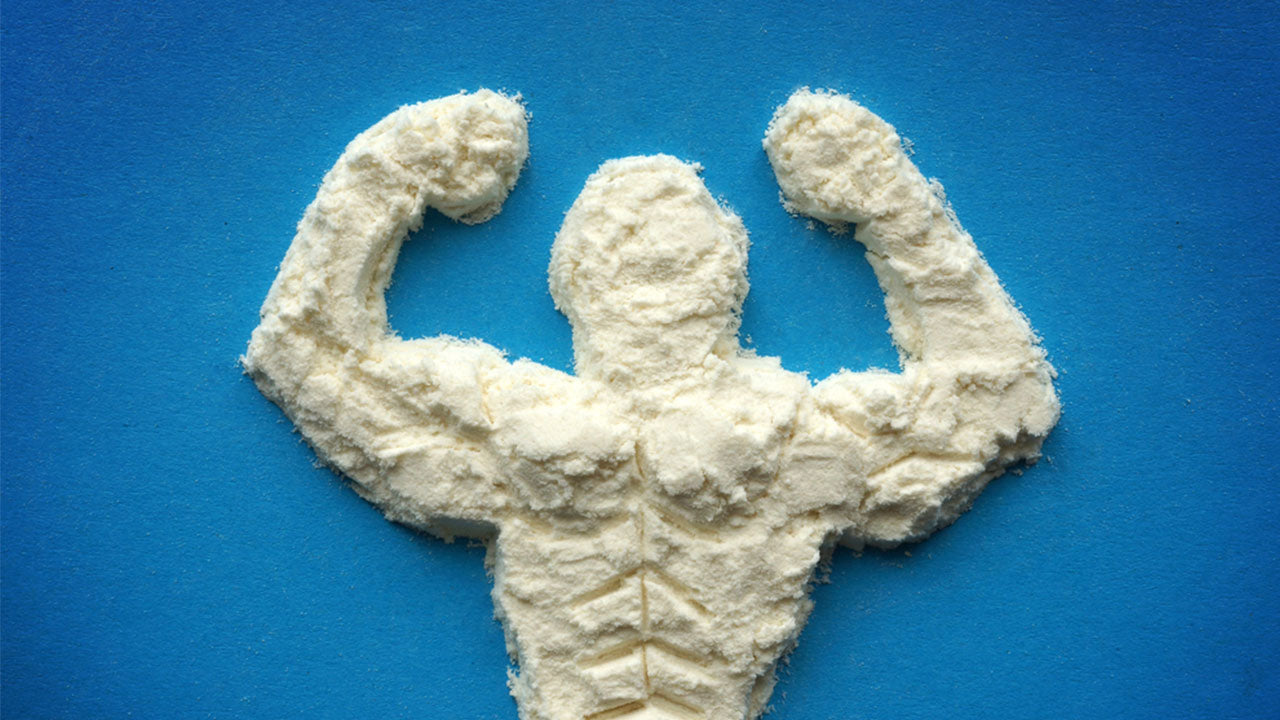How Many Grams of Amino Acids Do You Need a Day?
 By: by Amino Science
By: by Amino Science

When it comes to how many grams of amino acids you need in a day the dose is generally referred to in gram amounts. How the body responds to essential amino acids depends on how many grams it gets. A dose of as few as 3 grams can stimulate muscle protein synthesis significantly.
That said, the ideal daily dose of amino acids varies based on factors such as your physical size, body weight, lean body mass, activity level, and so on. Before exploring how those factors affect how many grams of amino acids you need in a day, let's review why you need amino acids to begin with.
Why You Need Amino Acids
It's common to see amino acids referred to as the building blocks of protein. And in fact, all dietary protein sources (both animal and plant proteins) contain the same 20 amino acids. However, the proportion of amino acids varies from protein to protein.
Over the course of the day, your body utilizes and recycles substantially more protein than most people consume in a day. Amino acids can be reutilized to some extent, but it's still crucial to ensure your body gets a good, steady supply of these vital compounds. Regardless of your age, according to the United States National Research Council Subcommittee on Recommended Dietary Allowances, "A continuous supply of dietary amino acids is required to replace these losses, even after growth has ceased."
Humans can't synthesize 9 of the 20 amino acids. What this means is that the only ones available to carry out the many vital tasks for which amino acids are responsible are the ones you absorb from your dietary protein intake. For this reason, those nine—histidine, isoleucine, leucine, lysine, methionine, phenylalanine, threonine, tryptophan, and valine—are called the essential amino acids.
Three of the essential amino acids, isoleucine, leucine, and valine, belong to a subgroup called the branched-chain amino acids. They're often singled out from other amino acids and are particularly popular among athletes because they've been shown to enhance exercise performance, reduce muscle soreness and improve recovery, revamp body composition, and activate muscle protein synthesis.
The 11 remaining amino acids are considered nonessential, not because the body does not need them just as much as the essential amino acids for muscle growth and other vital functions but because the body can synthesize them.
A further seven of these can become indispensable under certain circumstances, for instance, if a person has liver damage. Those are known as conditionally essential amino acids.
While different amino acids have their own unique traits and responsibilities, for optimal health and wellness, you'll have to provide all 20 amino acids your body needs—and provide them in the appropriate concentrations.
How Many Grams of Amino Acids Do You Need in a Day?
When determining how much of a nutrient you need a day, it is customary to consider macronutrients in the diet (protein, carbohydrates, and fats) as a percent of total caloric intake. But when it comes to how many grams of amino acids you need in a day the dose is generally referred to in gram amounts. The number of calories in a pure essential amino acid (EAA) supplement, for instance, is insignificant in the context of total caloric intake, and for this reason supplements are generally sold in gram (g) units.
The Standard: A 3-Gram Dose of Amino Acids
How the body responds to EAAs depends on how many grams it gets. A dose of as few as 3 grams can stimulate muscle protein synthesis significantly. Consuming a 3-gram EAA supplement can generate almost 6 grams of muscle protein—the perfect balance of EAAs enables the muscle to incorporate every single one of the EAAs into protein. The body also reuses readily available nonessential amino acids to contribute to the total amount of protein produced.
While a 3-gram dose can be effective over time, the amount of muscle protein made from that small dose is limited to the amount of EAAs consumed relative to the size of the muscle mass. While the production of 6 grams of muscle protein from 3 grams of EAAs is impressive, it is not a large amount of new muscle protein when compared with total muscle mass.
Muscle mass can range from 25-80 pounds depending on your gender, size, and body type. Certain EAA benefits, such as the anti-inflammatory effects, are immediately activated with a dosage of 3 grams, but it will take some patience before you see the benefits in terms of muscle size and strength—at least a month of regular consumption, preferably twice per day, to achieve noticeable gains in muscle mass and function.
The Maximum: A 15-Gram Dose of Amino Acids
The amount of muscle protein produced in response to EAA intake increases linearly up to a dose of 15 grams. Quite simply, a bigger dose will give you a bigger response, but more than 15 grams is unnecessary. Also, as long as you wait at least 1 hour after one dose before taking another dose, you will get the same response to each of the multiple doses in one day.
So, there is a big range of possible doses of EAAs. The appropriate dose depends on your desired results and how fast you want to achieve them.
If you are on the smaller side and are seeking to support muscle health, a basic dose of 3 grams is reasonable. For example, a petite woman of around 105 pounds with about 30 pounds of muscle will get a robust response and over time see positive effects with a 3-gram dose of EAAs.
A young healthy man who weighs 200 pounds and has a muscle mass of about 80 pounds would be better off with a 6-gram dose of EAAs. (A 3-gram dose would be just 0.008% of the muscle mass, so 6 grams would be more appropriate in order to account for the larger muscle mass.)
Two doses per day, between meals, is optimal, but you will still get beneficial effects if you only take one dose per day.
In addition to your protein needs based on your body fat and muscle percentages, your preferred activities and goals will influence both the amount of amino acids you need in a day as well as the optimal timing for ingesting those amino acids. If your primary goal is to facilitate weight loss, and particularly if you're restricting calories to do so, you'll want to take 15 grams of amino acids 5 times daily. But those focused on aging healthfully should take 3-6 grams of amino acids once or twice a day between meals.
The important point to keep in mind is that EAAs are required nutrients with many roles in the body beyond acting as components of muscle protein. A small dose of 3 grams can have beneficial effects in a number of respects in addition to building muscle, such as encouraging fat loss, so even a large muscular man will benefit from a small dose. The activities in which one participates, and the desired results from the EAA supplement, are probably more important than a person’s size or physical makeup.

How to Take Essential Amino Acid Supplements
EAAs can be consumed either as powder dissolved in water, as capsules, as a beverage, or a combination of all three.
EAA supplements usually contain amino acids and some flavoring. It is common that about 20-25% of the weight of a supplement is flavoring. When determining the right EAA dose for you, be sure you are using the weight of the active component of the mixture (i.e, the EAAs) and are not including the weight of the flavoring. If you are using a supplement that has a mixture of free EAAs and protein, add the EAA component of the protein to the amount of free EAAs to determine the dose you are consuming. For example, if you are using a supplement containing 3 grams of free EAAs and 1.5 grams of whey protein you’re consuming approximately 4.5 grams of EAAs, since whey protein is roughly 50% EAAs.
If you are taking EAA supplements because your regular diet falls short in meeting the recommended intake of high-quality protein, then, in addition to the between-meal doses, I recommend taking supplements with your meals to enhance the physiological effectiveness of the consumption of the incomplete protein food sources in your diet. The dosage with meals to make up for dietary deficiencies depends on how far short your diet falls of the goal intake of high-quality protein. In the case of a vegan diet, this could be up to 15 grams of EAAs with each meal to obtain optimal results.
Optimal nutritional supplementation with EAAs will help maintain an adequate supply of amino acids in the blood throughout the day to support various physiological functions without the interruptions that normally occur when food is not being absorbed. Best results are therefore obtained by taking an EAA supplement twice per day, between meals or before going to bed.
If you are still unsure how many grams of amino acids you personally need in a day, don’t worry about it. The beauty of essential amino acids is that there are no known adverse responses to a balanced formulation of EAAs, so you don’t have to be concerned that you are taking too much. A very small dose has proven benefits for stimulating muscle protein synthesis, so you likewise don’t need to worry that you are taking too small of a dose to elicit beneficial results. The recommended dosages are meant as guidelines; if you find successful results with a different dose, stick with it.
For the best amino acid supplements formulated according to your body's most pressing health needs, click here.

Up to 25% off Amino
Shop NowTAGS: knowledge
Join the Community
Comments (0)
Most Craveable Recipes




 833-264-6620
833-264-6620



















